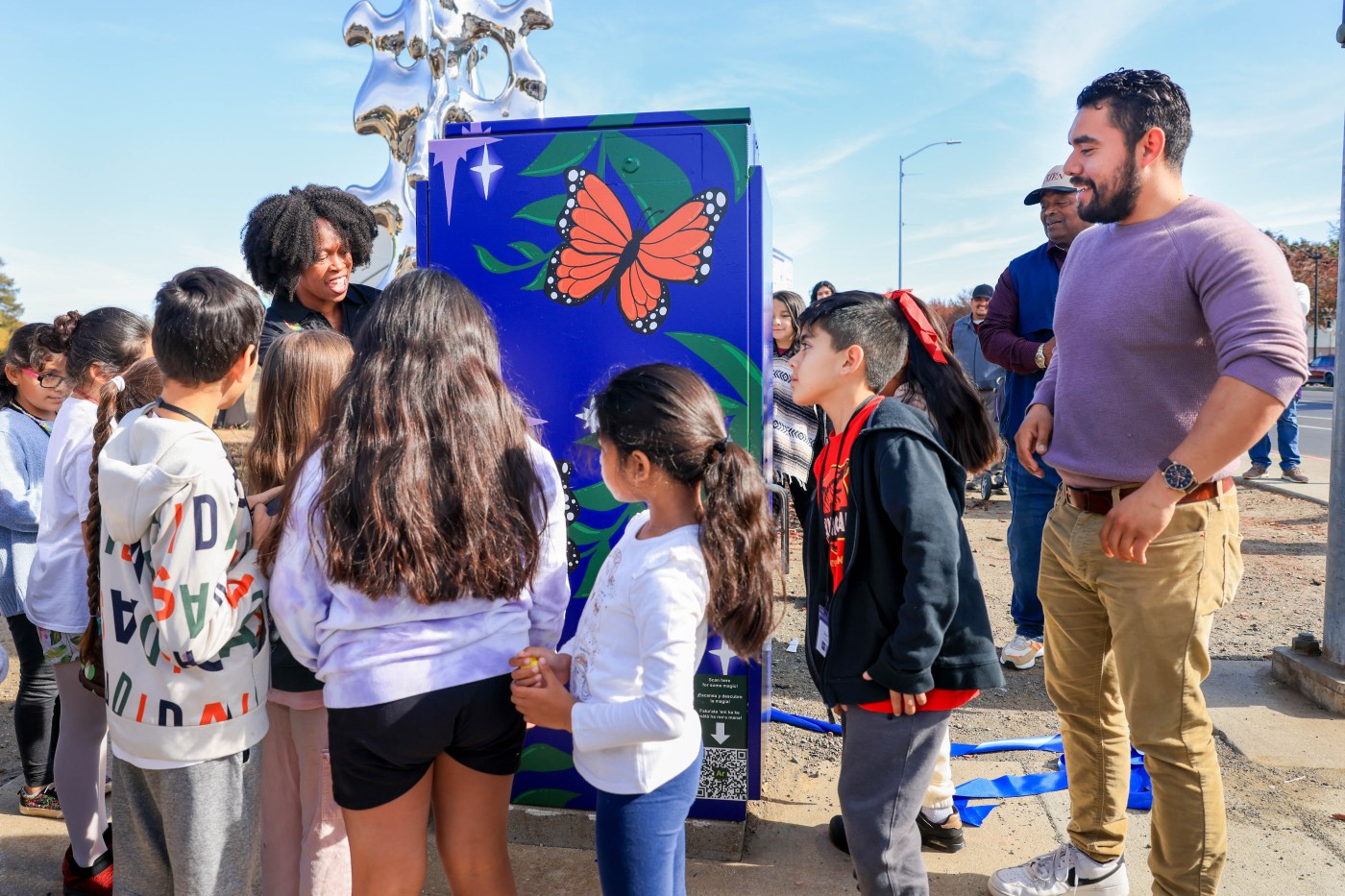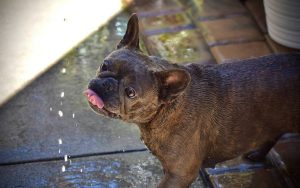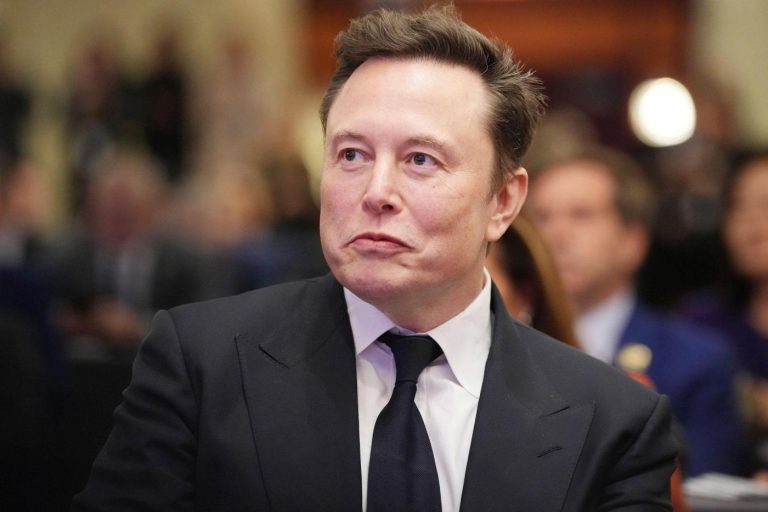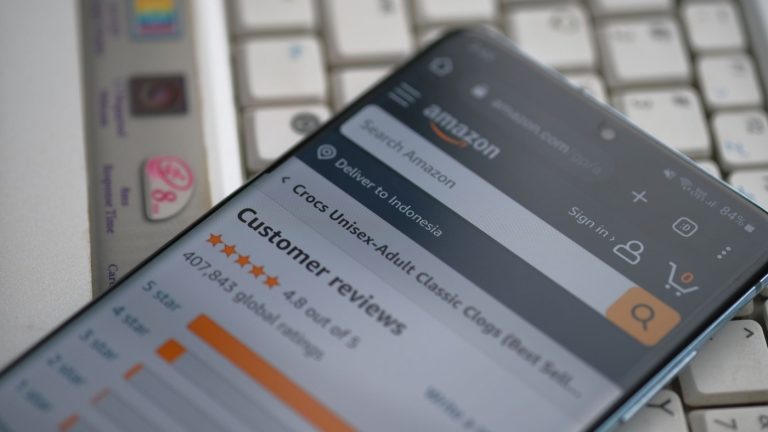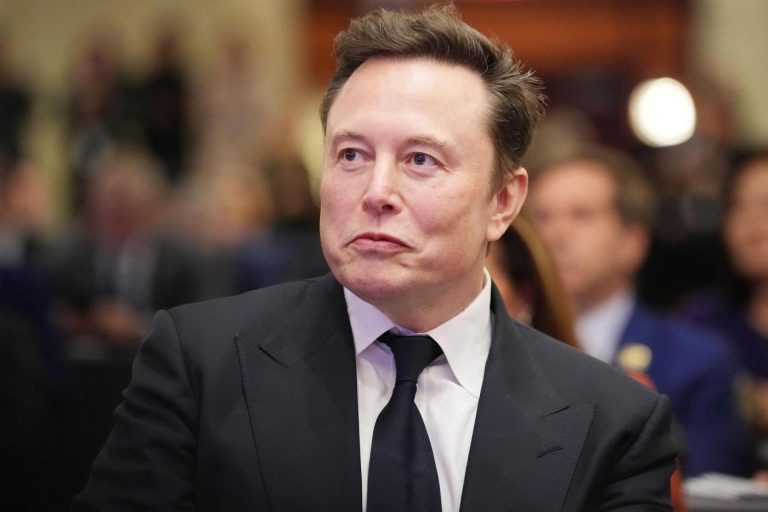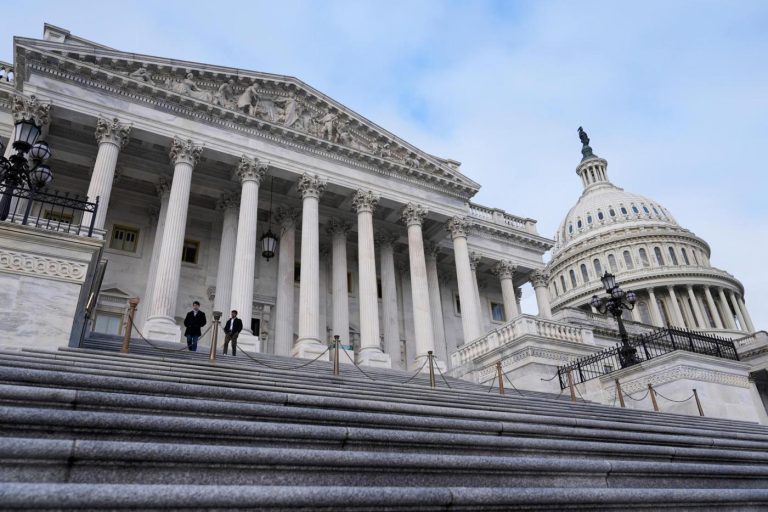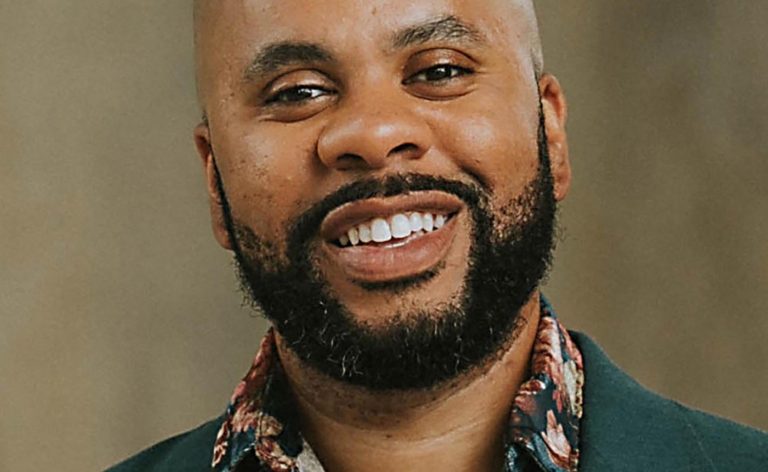EAST PALO ALTO — With the click of a button, a QR code allows monarch butterflies to fly at the corner of University Avenue and Bay Road, appearing to float in the air alongside a DIY soundtrack of horns and drums.
It’s just one of a dozen sites where K-12 students have revitalized electrical boxes across East Palo Alto this past year, bringing original animations, illustrations and music to life through augmented reality, and creating the first interactive artwork of its kind nationwide.
EPACENTER, a local creative youth development organization, partnered with public schools, charter schools and other nonprofit organizations to help more than 150 youth tap into their individual creative interests — such as illustration, claymation, music and graphic design — in an effort to meld the urban, natural and technological beauty they see every day.
Nadine Rambeau, EPACENTER’s executive director, said they strive to teach kids how to not only develop their creative abilities, but also build the confidence and drive to unleash those skills into the real world.
Lead artist JD Beltran addresses the audience during the utility box unveiling ceremony at University Avenue and Bay Road intersection in East Palo Alto, Calif., on Saturday, Nov. 16, 2024. About 140 students from EPACENTER participated in an interactive art project on a dozen electrical boxes that feature music and animation after a QR code visible to the public is scanned. EPACENTER coordinated the one-year-long project with support from the California Arts Council, the City of East Palo Alto, and the San Mateo County Department of Health. (Ray Chavez/Bay Area News Group)
“What we are trying to teach kids to be able to do at EPACENTER is not just develop your creative abilities, but it’s also take it to the next level and see it writ large in the world,” Rambeau said after a ribbon cutting Saturday that unveiled the arty electrical boxes. “That’s a really important thing for youth of color — to be able to see themselves affecting reality in a positive way.”
In line with EPACENTER’s mission to push the envelope of technology in the heart of Silicon Valley, two local artists led this electrical box makeover: Christina Velasquez, who grew up in East Palo Alto, worked with youth art interns on designing the wrap that went around the electrical boxes, while the QR code-activated animations were an invention of JD Beltran, a globally renowned conceptual artist, filmmaker, and writer based in San Francisco.
“Sometimes art can be intimidating, so this was something where they were having fun and participating in the way that felt best to them,” Rambeau said. “We want to be able to really get the students to play with the technology that comes out of the region, instead of feeling intimidated or like they don’t have access to it.”
In addition to funding from the California Arts Council, the San Mateo County Department of Health and the city of East Palo Alto, Rambeau said the work wouldn’t have been possible without generations of homegrown and transplant artists in the Bay Area that helped meld creatively and technology in their own backyard.
Moreover, she said she hopes this project will also expand local kids’ ideas of what’s possible by connecting them with artists within their community that have achieved greatness.
While it’s not necessarily a novel idea for cities to beautify drab utility equipment, these newly wrapped boxes are the first 12 to add a dollop of color to East Palo Alto’s streets — celebrating pride in the natural and cultural beauty of a community that has fought for a place to live and thrive in Silicon Valley since its incorporation 40 years ago.
Historically redlined and cash-strapped, East Palo Alto has long struggled compared to its affluent neighbors on the Peninsula, home to Stanford University and towns like Atherton, Menlo Park and Palo Alto.
For Mayor Antonio López, who was born and raised in the city he now leads, this project represents decades of forward progress rebuilding East Palo Alto’s reputation.
Alongside years of city-led initiatives to help low-income, working class East Palo Altans combat gentrification, rising housing prices and crime, he said seemingly simple projects like putting youth-inspired art on electrical boxes are also a powerful reminder of belonging.
“In so many ways, this is going to help rehabilitate, heal and empower folks and families,” López said. “I think that’s critical, because it sets a new tone for what kind of city we want to be and who is going to help us change that.”
Fatima Aroyo, 7, and her brother Aldo Arroyo, 10, use their cellphones to scan the QR code from a utility box model on display during the utility box unveiling ceremony at University Avenue and Bay Road intersection in East Palo Alto, Calif., on Saturday, Nov. 16, 2024. About 140 students from EPACENTER participated in an interactive art project on a dozen electrical boxes that feature music and animation after a QR code visible to the public is scanned. EPACENTER coordinated the one-year-long project with support from the California Arts Council, the City of East Palo Alto, and the San Mateo County Department of Health. (Ray Chavez/Bay Area News Group)
Related Articles
How a viral, duct-taped banana came to be worth $1 million
San Jose woman creates ‘selfie wonderland’ for visitors to Imaginarium
Neon will never die: Inside the Bay Area movement devoted to the glowing art
13 holiday gift ideas for the Bay Area foodies and fun seekers on your shopping list
The sensational Sensorio light display in Paso Robles adds new exhibits
He said these colorful electrical boxes illustrate how the community has repainted those past narratives — a future on display for neighbors walking by, as well as commuters often rushing towards Highway 101 or the Dumbarton Bridge.
López is encouraged that East Palo Alto’s youth have at least 12 tangible reminders that their creative power and agency can be a tool to make change — leaving their cultural imprint on their city.
“When they get older, they can say, ‘Hey, I built that, I was a part of that,’” López said. “You can’t overstate it in that sense, especially when people just walking or driving by can see these boxes and take a moment to pause and reflect on the beauty of our community.”
